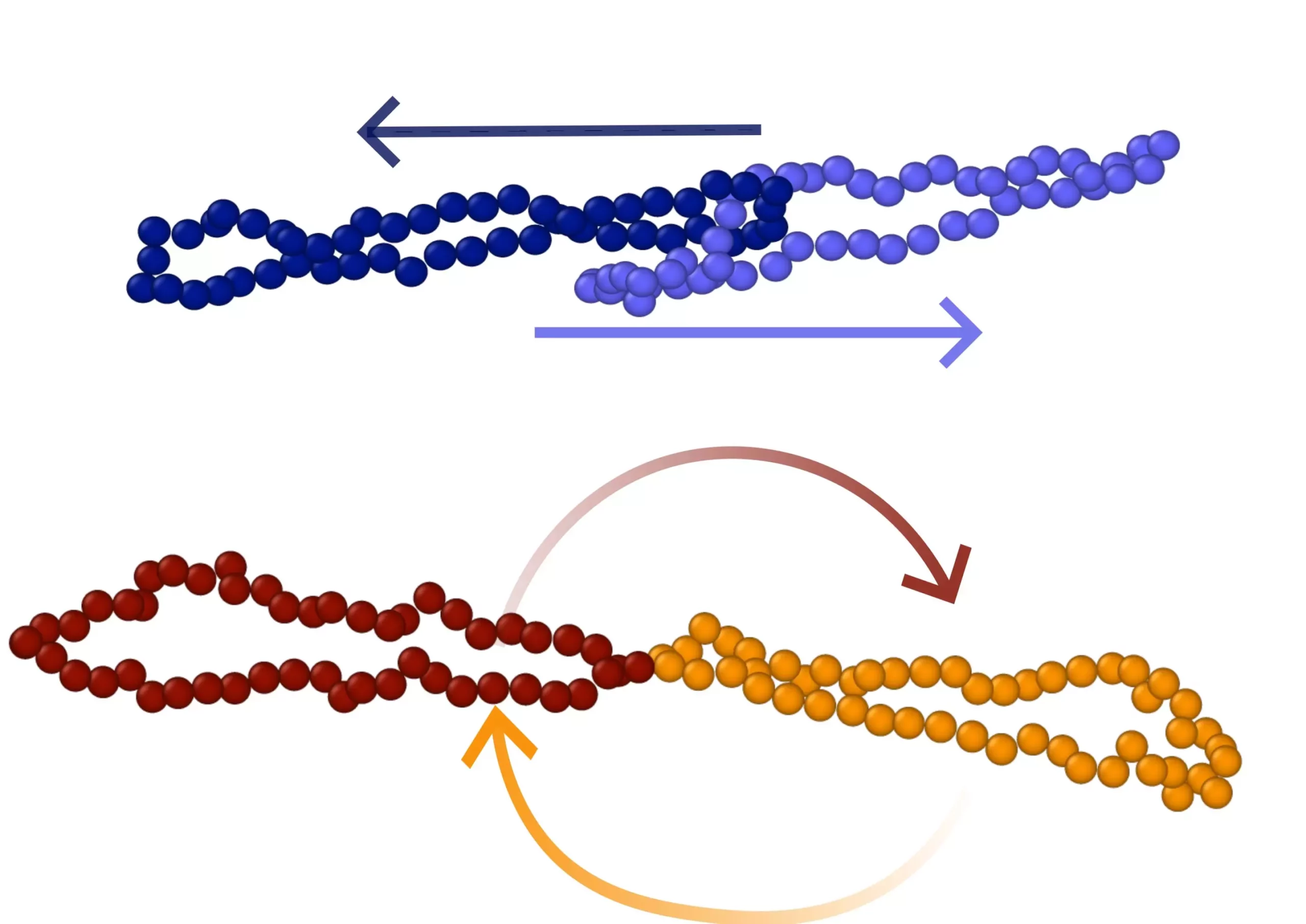Fluid shearing, which involves the sliding of fluid layers over each other under shear forces, is a crucial concept in both nature and rheology. Shear forces are lateral forces applied parallel to a material, leading to deformation or slippage between its layers. This phenomenon plays a significant role in understanding the flow behavior of matter, including liquids and soft solids. Through fluid shear experiments, scientists can analyze essential rheological properties such as viscosity and thixotropy.
Recent research in the field has introduced a novel approach by considering polymer topology, which refers to the spatial arrangement and structure of molecules. In this study, researchers focused on ring polymers, which are macromolecules composed of repeating units forming closed loops without free ends. Two types of connected ring pairs were examined: bonded rings (BRs) with chemical linkages and polycatenanes (PCs) with mechanical linkages via a Hopf link.
The study placed special emphasis on incorporating hydrodynamic interactions through simulation techniques to understand the interplay between fluctuating hydrodynamics and polymer topology. The results revealed unexpected dynamic patterns in both BRs and PCs under shear, distinct from other polymer types like linear, star, or branched molecules. These unique motion patterns, termed gradient-tumbling and slip-tumbling, highlighted the influence of hydrodynamics and ring topology on the behavior of the polymers.
The distinct modes of motion exhibited by BRs and PCs have significant implications for the mechanical properties of the solutions. BRs release internal stresses through tumbling, while PCs store stresses permanently, leading to higher viscosity in the latter case. This difference in behavior suggests that the tumbling motions and structures of the polymer compounds could affect the shear viscosity of highly concentrated solutions or polymer melts. Further experimental and theoretical studies are required to explore this hypothesis.
The study on the impact of polymer topology on fluid shear behavior highlights the intricate relationship between hydrodynamics and polymer architecture. The unexpected dynamic patterns observed in ring polymers underscore the importance of considering molecular structures in understanding rheological properties. Collaborative research efforts between institutions like the University of Vienna, the Sharif University of Technology, and the International School of Advanced Studies continue to push the boundaries of rheology and deepen our understanding of fluid behavior under shear forces.


Leave a Reply